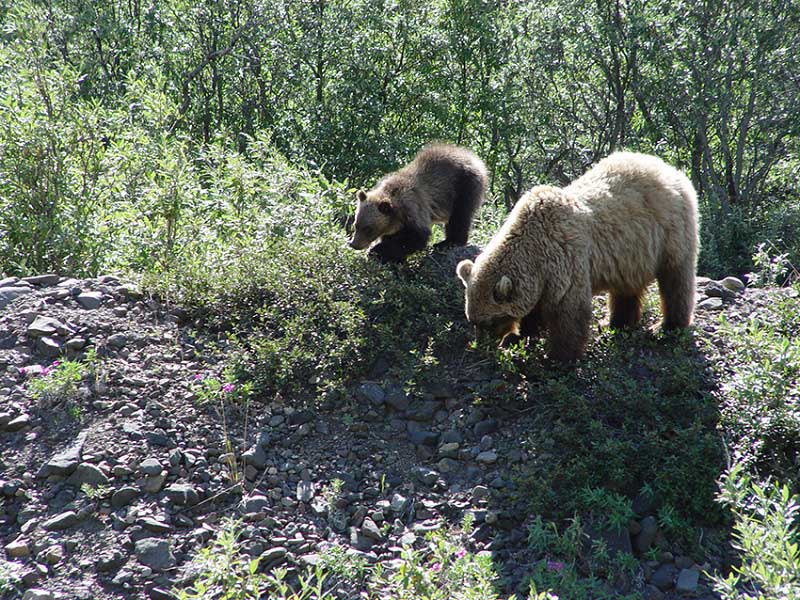RiskVA
Animals and People – A Story of Love and Fear 27 Jun 2012
Fear and fascination are two of the opposite ways to describe our severely mixed and unrealistic reactions to animals. For my purposes today if it moves, it’s an animal; the ones that walk, run, crawl, hop, flutter, fly, swim and slither. Too often we’re either too afraid or not afraid enough of them.
Mammals seem largely to be in the group that many people like and are fascinated by especially if they are “babies.” Babies, shmabies! A biologist would call them immatures. Babies are cute, snuggly, cuddly and huggable. Even the Mommies and Daddies of wildlife babies are often thought of as loveable. Recently a TV anchor woman, after watching a tranquilized black bear fall out of a tree into a rescue net, gushed “isn’t he just adorable!?” Interesting maybe, but adorable? Come on. A black bear or any other bear is only even tolerable when it’s not chasing you up a tree, slashing you or ripping out the interior of your car to get at food. Harsh huh? But, “they’re just Teddy Bears.”
To most of us, fuzzy, furry and even feathered creatures are “nice” animals. City folks, and that means almost all of us nowadays, seem most likely to be afflicted with Disneyitis in the apparent belief that most animals have sweet dispositions and just want to be your friend. Friend? Do you “friend” them on Facebook? Come on. Be real.
And while I’m on this kick, I’ll say straight out that I’m not sure “petting zoos” are a great idea. What does petting or cuddling a lamb or a chick really accomplish? Is it a bonding ritual that helps us bridge the gap between us and them? We eat lamb chops and fry chickens. Does this farm familiarity carry over with city folks to dangerous wildlife? “Baby” lions and tigers and bears certainly have appeal too, but their parents are a whole other thing. Want to cuddle one of them?
On the other hand, few people think scaly, “slimy” things that slither are very loveable. The cry “it’s a snake!” can stand the short hair up on most folks’ necks. The mega over-reaction most people have toward reptiles and amphibians, including frogs and toads is sad. Interestingly, there are some folks on the other hand who can’t resist touching or picking them up. One of my former students picked up a pygmy rattlesnake and was rewarded with extreme pain and a trip to the hospital when his hand swelled up and turned purple.
Insects, especially those that fly are a mixed bag. Butterflies and moths are interesting and beautiful in the garden, but get one in the house and watch the clan run for cover. Bees and wasps? Even their buzzing flight sound sends us into a panic.
Don’t even start about spiders. Creepy, crawly, eight-legged horrors and the larger they are, the scarier. Interesting to watch when they’re not moving, but let it scurry toward you and it’s Katy, bar the door!
Birds are okay outdoors but have you ever had one get in your house? It’s brooms and blanket time to capture and evict it and if the avian interloper actually flies toward you during its intrusion, panic ensues. Why? Birds are very unlikely to eat you.
What’s wrong with us? Mostly we don’t spend enough time outdoors and it has become an unfamiliar and fearsome place. When I was a kid we collected insects and spiders, raced doddle bugs, scooped up lightning bugs and put them in jars, kept snakes in cages, caught frogs and toads. (No, toads don’t cause warts.) Now almost all of us live and travel in temperature controlled chambers almost entirely separated from the outdoors and its myriad of fearsome creatures.
If you want your kids to grow up with more balanced attitudes toward the world we live in, get them outside. Go to parks, walk through the woods, hike mountain trails, sit on the back porch while the sun sets, the stars rise and the hypnotic sound of crickets and cicadas lulls you. These activities are a whole lot safer than the thrills our youth are exposed to with their unsupervised friends in town and certainly better for them than nonstop computer and smart phone games and texting. Make it a point to learn more about the fields and forests. They’re a large part of our world.
Dr. Risk is a professor emeritus in the College of Forestry and Agriculture at Stephen F. Austin State University in Nacogdoches, Texas. Content © Paul H. Risk, Ph.D. All rights reserved, except where otherwise noted. Click paulrisk2@gmail.com to send questions, comments, or request permission for use.

